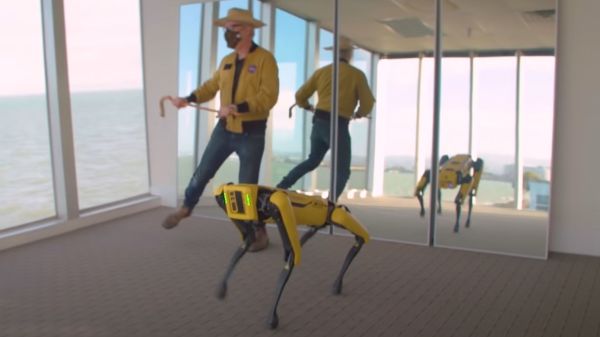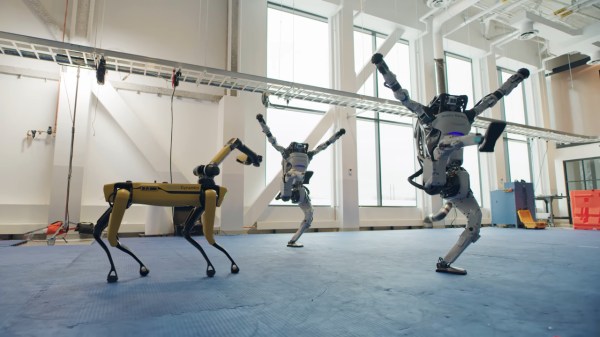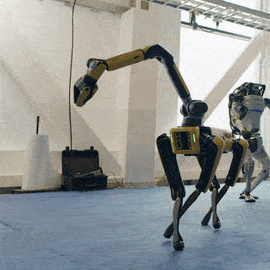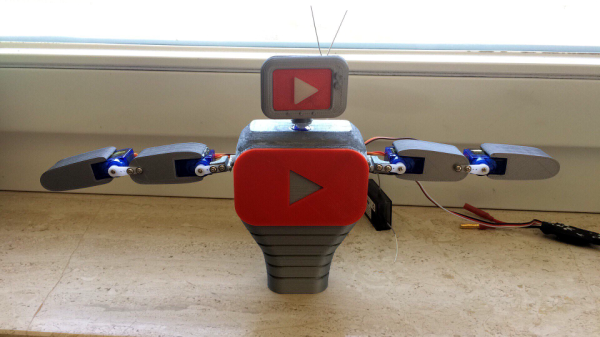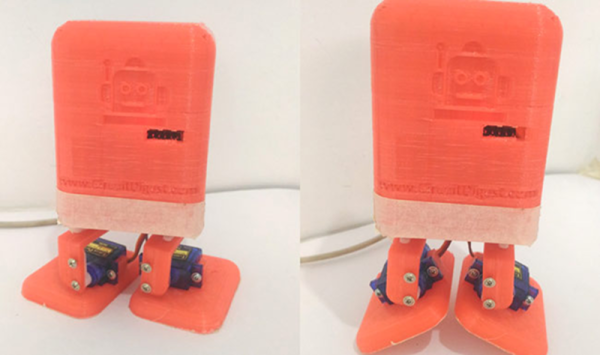Boston Dynamics loves showing off their robots with dance videos. Every time they put one out, it ignites a discussion among robot enthusiasts debating what’s real versus merely implied by the exhibition. We really want to see tooling behind the scenes and fortunately we get a peek with a Spot dance choreography session posted by [Adam Savage]’s Tested team. (YouTube video, also embedded below.)
For about a year, the Tested team has been among those exploring a Spot’s potential. Most of what we’ve seen has been controlled from a custom tablet that looked like a handheld video game console. In contrast, this video shows a computer application for sequencing Spot actions on a music-focused timeline. The timer period is specified in beats per minute, grouped up eight to a bar. The high level task is no different from choreographing human dancers: design something that can be performed to music, delights your audience, all while staying within the boundaries of what your dancers can physically do with their bodies. Then, trust your dancers to perform!
That computer application is Boston Dynamics Choreographer, part of the Spot Choreography SDK. A reference available to anyone who is willing to Read The Fine Manual even if we don’t have a Spot of our own. As of this writing, Choreography SDK covers everything we saw Spot do in an earlier UpTown Funk dance video, but looks like it has yet to receive some of the more advanced Spot dances in the recent Do You Love me? video. There is a reference chart of moves illustrated with animated GIF, documented with customizable parameters along with other important notes.
We’ve seen a lot of hackers take on the challenge of building their own quadruped robots on these pages. Each full of clever mechanical design solutions that can match Spot’s kinematics. And while not all of them can match Spot’s control systems, we’re sure it’s only a matter of time before counterparts to Choreographer application show up on GitHub. (If they already exist, please link in comments.) Will we love robots once they can all dance? The jury is still out.
Continue reading “Start Your New Career In Robot Dance Choreography”

